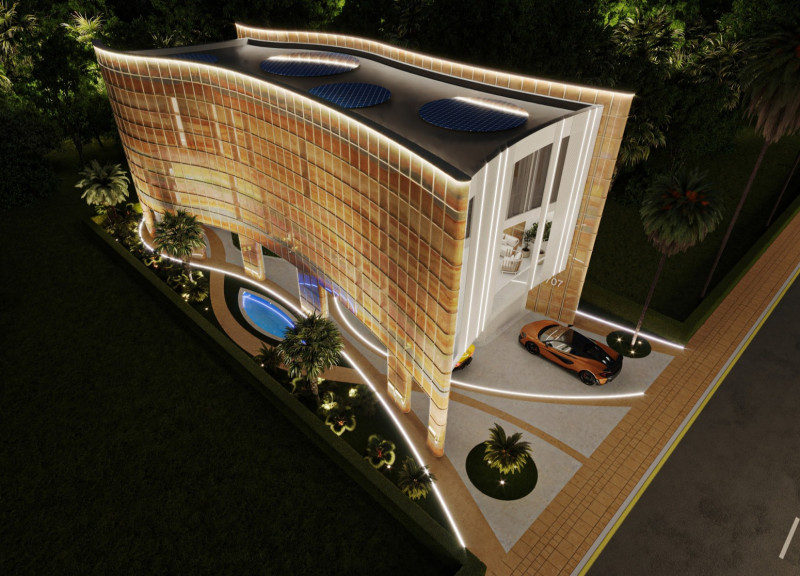5 key facts about this project
At its core, the project serves as a multi-functional facility designed to enhance community interaction and foster a sense of belonging among its users. The design effectively accommodates various functions, including shared living spaces, recreational areas, and facilities for meetings and gatherings, thereby promoting a lifestyle that values both privacy and social interaction. This balance is critical in today's fast-paced world, where community cohesion often takes a backseat to individual pursuits.
The architectural approach taken in this project is marked by a holistic understanding of its context. By incorporating local materials and design elements that reflect the vernacular architecture of the region, the project pays homage to its geographical location while simultaneously integrating modern design techniques. The use of natural materials such as sustainably sourced timber, local stone, and energy-efficient glazing not only enhances the visual appeal of the building but also emphasizes sustainability—a core principle of the project. These materials are carefully selected to ensure they withstand the local climate conditions, contributing to the longevity of the structure while minimizing the environmental impact.
One of the distinguishing features of this architectural design is its commitment to transparency and light. Expansive windows and open-plan interiors create a fluid connection between indoor and outdoor spaces, allowing natural light to permeate the building and providing users with views of the surrounding landscape. This consideration of light and space fosters a welcoming atmosphere, encouraging passive social interaction among residents and visitors alike. Furthermore, incorporating outdoor terraces and communal gardens not only enhances the overall experience of the building but also reinforces the project's connection to nature, promoting well-being and mindfulness.
The design outcomes of this project reflect a strong focus on user experience. Careful attention has been paid to the spatial organization, facilitating easy navigation throughout the building. Shared areas are strategically placed to act as social hubs, where residents can come together, while private living quarters provide a necessary retreat. This duality within the design supports a lifestyle that values community engagement without sacrificing personal space.
Unique design approaches include the implementation of passive solar heating techniques, which optimize energy consumption throughout the year. Additionally, the building's orientation has been meticulously planned to maximize daylight exposure and minimize heat loss during colder months. This consideration not only serves to reduce energy bills for occupants but also aligns with a broader commitment to sustainability.
Moreover, the incorporation of innovative technologies—such as rainwater collection systems and green roofs—exemplifies the project's forward-thinking ethos. These elements contribute to the building's overall resilience and adaptability, ensuring it remains functional and sustainable in the face of changing environmental conditions.
In summary, this architectural design project stands as a testament to the potential of architecture as a medium for fostering community ties while being sensitive to environmental considerations. The thoughtful integration of materials, spatial organization, and sustainable practices yields a facility that is not only aesthetically pleasing but also practical and responsive to its users' needs. For a more comprehensive understanding of the architectural plans, sections, and designs, it is recommended to explore the project presentation further. Engaging with these elements will offer deeper insights into the innovative ideas and thoughtful considerations that define this remarkable architectural endeavor.


 Gediminas Tunaitis,
Gediminas Tunaitis, 























